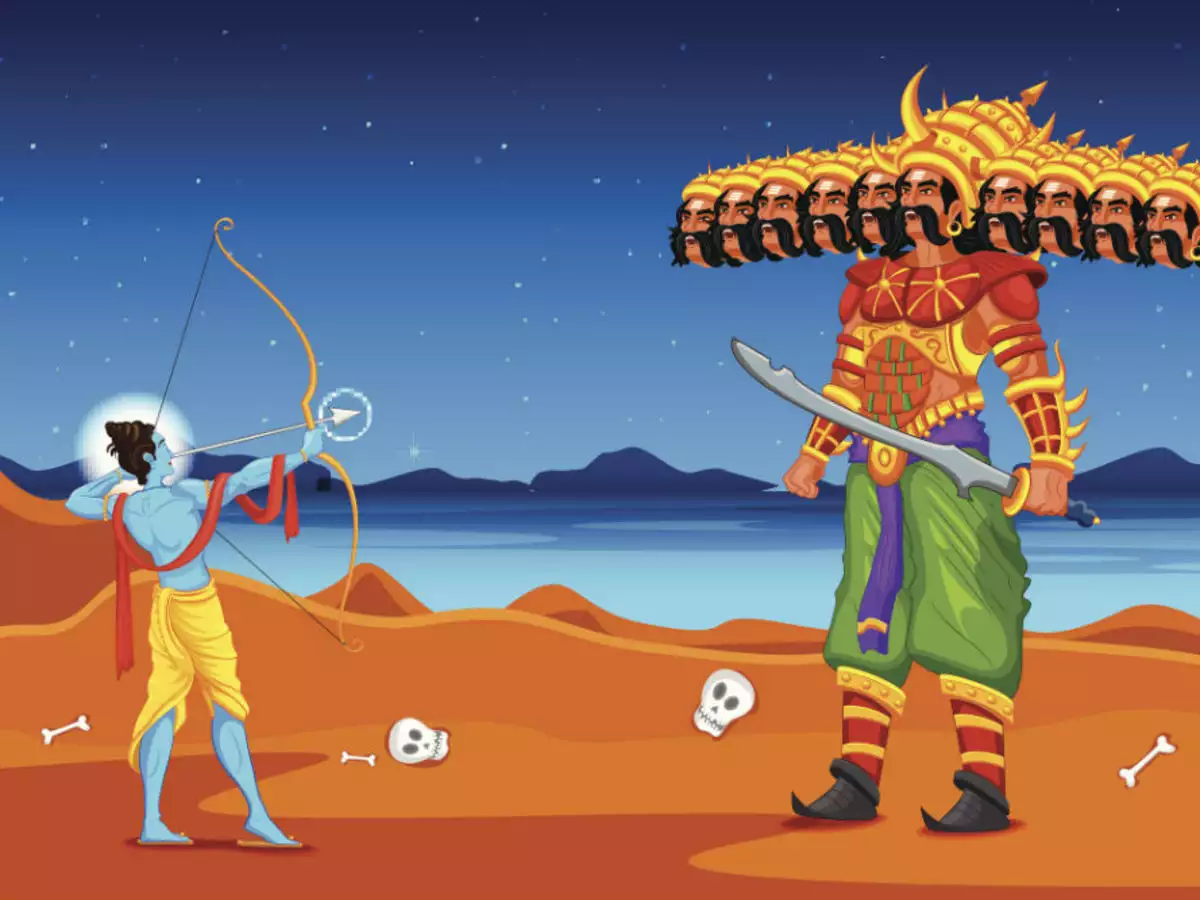Dussehra is a lot more than just Lord Rama defeating the 10-headed Ravana

When the words ‘Dasha’ meaning ‘ten’ and ‘Hara’ meaning ‘defeat’ are put together it becomes Dussehra - the commemoration of triumph of good over evil and restoration of hope and faith. The true essence of life and spiritual journey that all living being embarks. The festival of Dussehra is the day that encapsulates that powerhouse positivity.
It is a major Hindu festival which is celebrated on the 10th day of the Navratri festival. If one peeps into the Hindu calendar then this auspicious day falls on the 10th day of the month of Ashvina (September–October), which is the seventh month of the Hindu calendar with the appearance of the full moon.
Hindu scriptures speak of this day as a moment in time when Lord Rama defeated the 10-headed demon, King Ravana, who had abducted Rama’s wife, Devi Sita.
India houses people with different faith and beliefs. And so, it is not astonishing that this festival is observed for different reasons and celebrated differently in various parts of the country. What is startling is each part has its own story of Good wins over Evil.
On this occasion of Dussehra, we bring to you a few ways in which this festival is celebrated across India:
Durga Puja
As per Hindu mythology, the demon named Mahishasura had waged out war against the Gods. The power to slay a demon with such devious yet enormous strength was only possessed by Goddess Durga. She commenced the battle with the asura on the seventh day of Navratri, known as Maha Saptami, and slayed him by the final day of Vijay Dashami. Therefrom began the celebration of Durga Puja.
This festival is celebrated with great fervor in states like West Bengal, Assam, Odisha, Tripura, and the country of Bangladesh.

Elaborately themed pandals with the clay idols of Maa Durga are erected in every possible corner of the city. People visit these pandals and offer prayers. There is a sort of competition that takes round amongst the pandals basis their decorations, innovativeness, and themes. The celebrations also feature ritual of dancing and drumming. On the 10th day, the idols of Durga are immersed in the river.
Mysuru Dussehra
It all started in the year 1610 when the Wadiyar king and his wife performed a special puja to worship Goddess Chamundeshwari in Chamundi Temple, situated on top of Chamundi Hill in Mysore, Karnataka.
Even after almost 4 centuries, the Mysore Palace is illuminated with 100,000 light bulbs, nightly from 7 p.m. until 10 p.m., during the festival.

On the last day, a traditional procession with Goddess Chamundeshwari carried atop a beautifully caparisoned elephant starts from Mysore Palace and ends in Bannimantap. The procession is escorted by horses, bands, dancers, and armed forces.
Kullu Dussehra
The story dates to the 17th century when King Raja Jagat Singh accidentally killed a brahmin priest. For penance, the king abdicated his crown and put an idol of Lord Raghunath (Lord Ram) on the empty throne, pledging that only the lord and his successors would rule the Kingdom of Kullu. Then began the celebrations of this day in the Kullu Valley.

The only difference is that the Kullu Valley celebrations of Dussehra start when the rest of India winds up. It commences on the day of Vijayadashami and continues for 7 days thereon. The idol of Lord Raghunath on a grand chariot is taken across the historic Dhalpur Maidan. The festival gets merrier with dancing, drinking, and feasting for a week.
Ramlila
Ramlila was started by Mughal king Bahadur Shah Zafar around 180 years ago.

In Delhi, the Navratri festival is celebrated by re-enacting the scene of the life story of Lord Rama, culminating with his defeat of the demon Ravan on the tenth day. Every day, before the show starts, costumed performers parade through the lanes of Old Delhi. On the 10th day, a giant effigy of the Ravan is put on fire to mark the victory of good over evil. The largest Ramlila celebration takes place at the Ramlila Maidan in Delhi.
Navratri
In Gujarat, the celebrations are synonymous with Dandiya-Raas and Garbas. Enthusiastic dancers in elegant ghagra choli perform garbas in circles to the beat of drums and folk songs.

Ayudha Puja
In Tamil Nadu, Ayudha Puja is observed on the 10th day when the forms of Shaktis: Saraswati (the Goddess of wisdom, arts, and literature), Lakshmi (the goddess of wealth), and Parvati (the divine mother) are worshipped. The Puja is focused on one’s profession and its related tools and connotes that a divine force is working behind it to perform well. It is considered an auspicious day to start learning an art or begin formal education on this day.

Current times are difficult and are induced with fear, uncertainty, restlessness, and anxiety which are all negative emotions. This Dussehra, you may be in any part of India or world, and be celebrating this day in whichever manner or not celebrating at all, the only prayer for one and all is may the good triumph over the evil in real life as well as within us.
Happy Dussehra from Apeksha News Network!















































